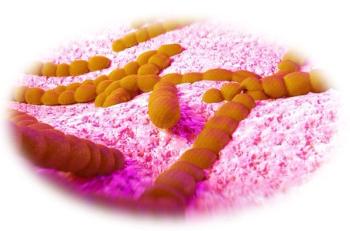
Cigarettes Plus Virus Combine to Increase Cervical Cancer Risk
STOCKHOLM -- Smoking and human papillomavirus (HPV) may work together to increase the risk of cervical cancer in situ, according to researchers here.
STOCKHOLM, Nov. 17 -- Smoking and human papillomavirus (HPV) may work together to increase the risk of cervical cancer in situ, according to researchers here.
In a case-control study, smokers infected with HPV-16, the most prevalent of the oncogenic types, had 14 times the risk of progressing to cancer than did smokers who weren't carrying the virus, found Anthony Gunnell, a doctoral candidate at the Karolinska Institute here.
These HPV-16-positive smokers also had more than double the risk of non-smokers with an HPV-16 infection, Gunning and colleagues reported in the November issue of Cancer Epidemiology, Biomarkers & Prevention.
The researcher also found that the higher the viral load, the greater the risk of cancer among smokers. "We were surprised to see this dramatically increased risk among women with high viral loads who smoked," Gunnell said.
The findings are based on a cohort of more than 100,000 Swedish women who had a normal first Pap smear from 1969 through 1995. The archived smears were stored at Uppsala University Hospital, near Stockholm.
From the Swedish cancer registry, all 499 cervical cancer in situ cases within the cohort were identified, as well as the same number of age-matched controls, the researchers said. All told, they found 375 cases and 363 controls for whom complete statistical data were available and who agreed to participate in interviews.
The study found:
- Among smokers, the odds ratio for cancer was 14.4 (with a 95% confidence interval from 5.6 to 36.8) for women who were carrying the virus compared to those who were not infected.
- In contrast, among non-smokers, the odds ratio for cancer was 5.6 (with a 95% confidence interval from 2.7 to 11.5) for women infected with HPV-16, compared to those not carrying the virus.
- If women had a high viral load and smoked, their risk of cancer was 27 times higher than smokers who were un-infected. The odds ratio was 27.0 with a 95% confidence interval from 6.5 to 114.2.
- Among non-smokers, however, high HPV-16 load contributed only a six-fold increase in risk: The odds ratio, compared with uninfected women, was 5.9, with a 95% confidence interval from 2.4 to 14.6.
"Our study would imply a synergistic action between HPV and smoking that would greatly increase the likelihood of women developing cervical cancer if they are HPV-positive smokers," Gunnell said. "This would put them in a risk group worthy of careful monitoring."
"Clearly, both exposures need to be present at the same time for there to be interaction," the researchers noted.
The researchers also found evidence for an interaction between duration of smoking, HPV-16 infection, and the risk of cervical cancer.
"One explanation for this interaction could involve the influence of smoking on persistence of HPV infection, probably due to localized immune suppression," Gunnell said. "Conversely, it could be related to the progression of neoplastic growth, since HPV and smoking appear to alter the levels of certain cytokines, which are involved in controlling abnormal cell growth."
But he added it's more likely that both mechanisms play a role.
The authors noted that a limitation of the study was the low numbers of HPV-16-positive female controls who also smoked."This meant that some strata contained relatively small numbers of individuals," they wrote. "A larger study, designed with a particular emphasis on recruiting more controls than were included in our study, would improve the power to detect significant interactions between smoking and HPV-16."
Newsletter
Enhance your clinical practice with the Patient Care newsletter, offering the latest evidence-based guidelines, diagnostic insights, and treatment strategies for primary care physicians.

































































































































































































































































































